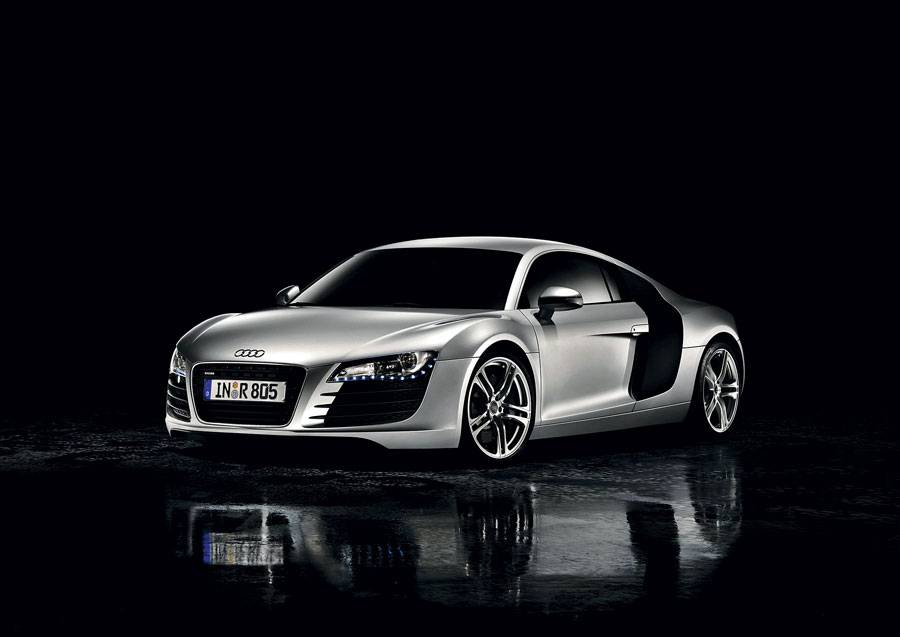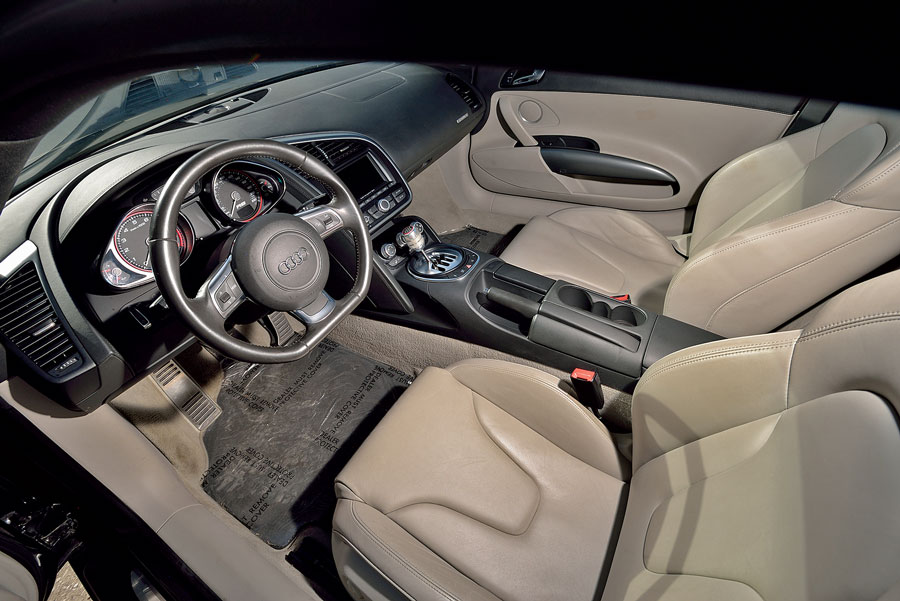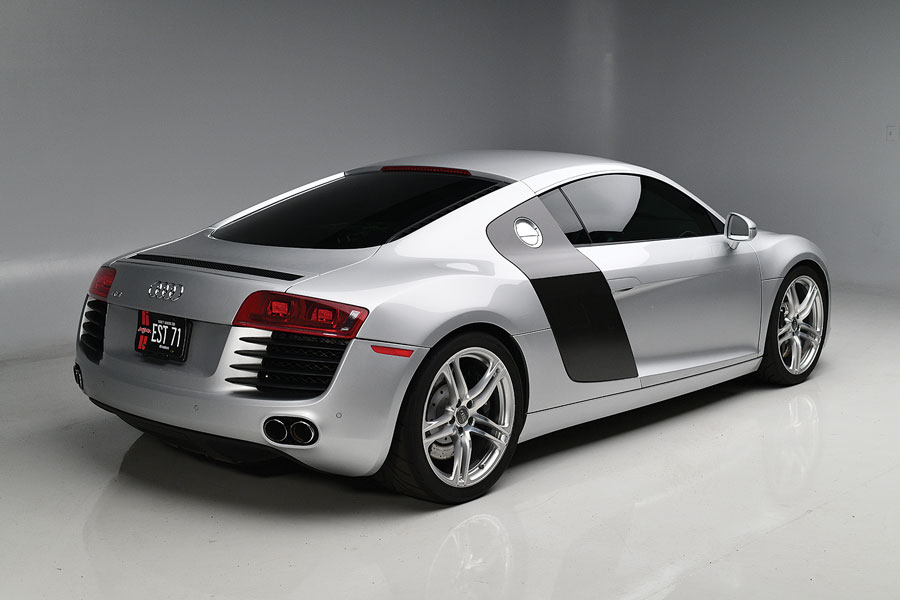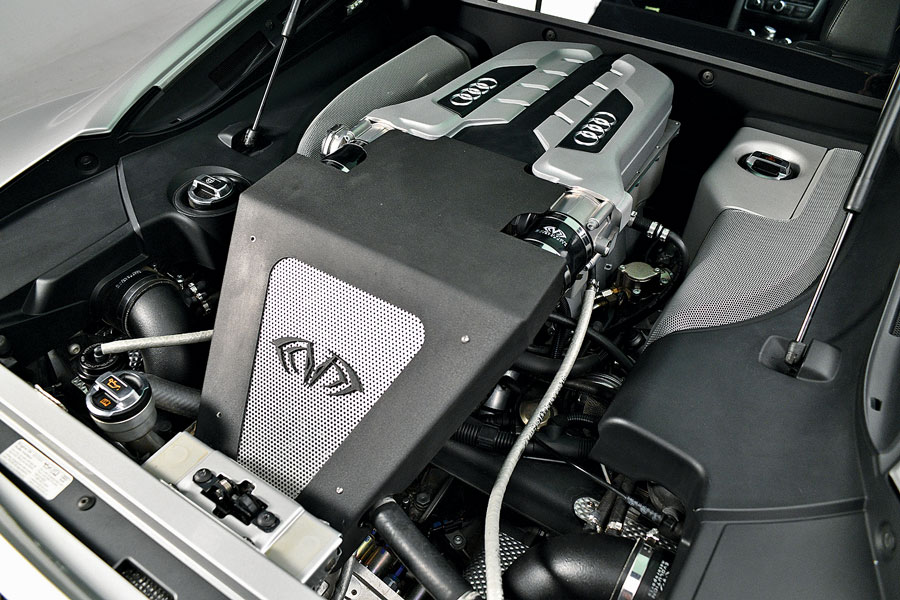
As with most breakthrough products, the original variant is often the best. Such is the case with the first-generation 2007–15 Audi R8 4.2.
While the R8 is not a supercar by today’s performance standards, it is incredibly well balanced and feels “just right,” especially with the 6-speed gated manual gearbox. It is also plenty quick for most folks, the 0–60 mph sprint taking just over four seconds on to a top speed of 186 mph. “Top Gear” summed it up best: “This is the R8’s genius: it’s the supercar experience, with sports car performance, wrapped up with Audi sensibility. And build quality. It’s fantastic.”
Subsequent iterations of the car were “improved” with a convertible roof and an optional Lamborghini-based V10. However, these improvements came with extra pounds and complexity, compromising the original’s R8 4.2’s simplicity, beauty and balance.
Links to the past
The Audi R8 partially owes its existence to several unrelated historic events that occurred over the past 90 years. For example, the risqué styling and envelope-pushing engineering of the R8 shares DNA with that of the fabled Auto Union “Silver Arrow” race cars which dominated grand prix racing in the late 1930s.
The R8’s styling is also arguably a wink and a nod to Walter Gropius’ influential pre-war avant-garde Bauhaus art movement. This art school was famous for its modern design approach, which attempted to blend mass production, everyday function and aesthetics into one unified whole.
Then, in 1998, Audi’s parent company Volkswagen acquired Lamborghini. This important transaction opened the door for the development of an Audi halo sports car. The original R8 was based on the Lamborghini Gallardo and shared many of its chassis components.
Finally, the Audi R8 LMP race cars won decisive victories at Le Mans in five of the six years they competed, from 2000 through 2005. These historic triumphs only helped raise enthusiasm in Ingolstadt for the development of a roadgoing R8.
From concept to reality
The actual development of the street-legal R8 dates back to the 2003 Audi Le Mans Quattro concept car. When development began in 2004, the R8 was a daring, risky and radical step forward for Audi. Finally unveiled to the public at the Paris Motor Show in 2006, the R8 made its U.S. debut a year later.
The original R8 was carefully crafted at Audi’s exclusive off-site high-performance subsidiary known as Audi Sport GmbH. The nucleus of the R8 is an all-aluminum Audi Space Frame that cradles a mid-mounted 4.2-liter, 32-valve V8 connected to a quattro all-wheel-drive system. The R8’s 420 horsepower was divided 30% front, 70% rear. A 6-speed manual transmission was standard, while a fiddly 6-speed R-tronic single-clutch automated manual was optional.
The R8’s futuristic silhouette evoked a “love it or hate it” response. Styled by Frank Lamberty and Julian Hoenig, the R8 shares little resemblance to anything else on the road. The rounded design has the profile of a rearward-facing teardrop with a radical side blade. Customers could order the blade in various colors and materials, and its contrast visually split the car in two. Meanwhile, the engine sits proudly visible under glass. Fourteen years later, the original R8 is one of a handful of modern designs likely to be considered timeless by future enthusiasts.
Exotic, but highly usable
The R8 V8 is a sublime and eminently drivable sports car — a German Acura NSX, yet with more creativity and style. I was fortunate to have acquired a first-generation R8 two years ago. After test-driving the car for a weekend, my decision to buy it was binary, instantaneous and non-financial. The R8 produced a striking epiphany: I had suddenly discovered both the best-kept secret and the most outstanding value in the collector-car market. The original R8 is one of the finest all-around sports cars I have ever experienced.
While the V8-equipped R8 is not quite a supercar, its balance, sound, feel and refinement are second to none. From egress to pedal placement to visibility, the R8 is an ergonomic and engineering wonder. Fit and finish are superb, and the quality and durability of paint, interior and leather are unparalleled. The R8’s manufacturing process was quintessentially German, incorporating care, skill, precision and attention to detail.
Movin’ on up
The first-generation R8 is emerging as a modern classic, having hit the bottom of its depreciation curve and now on the uptick. Costing six figures when new, first-generation R8 4.2 coupes currently trade in the $60,000 to $85,000 range. Clean, well-maintained R8s with higher mileage are cars to get in and drive, being reliable and comfortable enough for regular use. The Audi 4.2 V8 is also less expensive to maintain than the later 5.2-liter V10 Lamborghini engine. While the R8 was a marginally better value two years ago before the secret was out, it still represents a spectacular buy today. ♦


